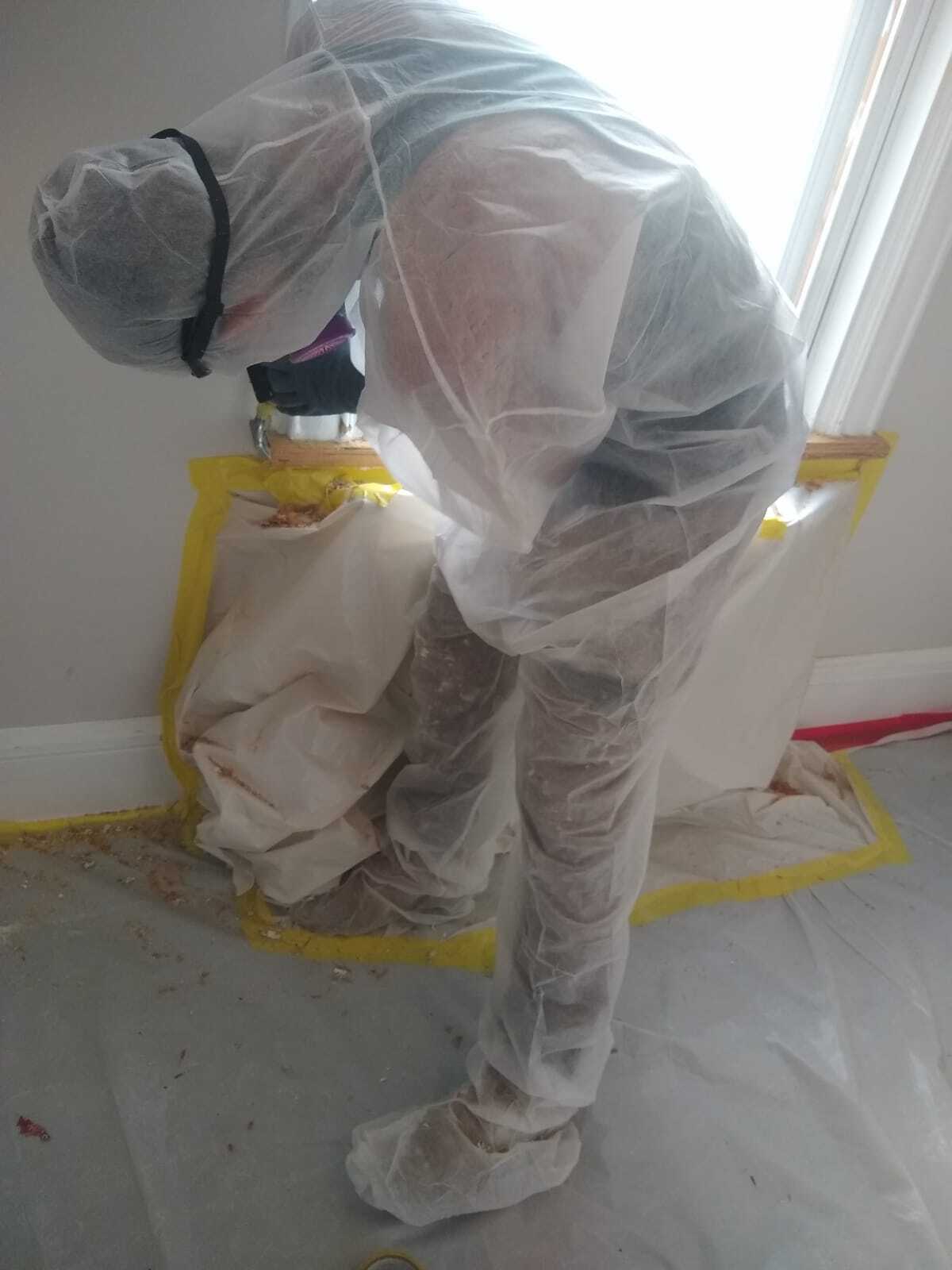Necessary Tools and Methods for Effective Lead Infraction Cleaning
Attending to lead offenses effectively requires an extensive strategy that blends the right devices with critical approaches. Simultaneously, the usage of specialized clean-up devices, such as HEPA vacuum cleaners and lead-specific cleaning agents, is crucial for thorough contaminant removal. Effective control methods, including plastic sheet and unfavorable air stress systems, are necessary to prevent the spread of dangerous products.
Individual Safety Tools
Individual protective equipment (PPE) is a critical component in the reliable monitoring of lead contamination cleaning. PPE works as an important barrier, securing employees from the hazardous results of lead exposure, which can result in severe health and wellness effects. The vital PPE for lead clean-up consists of respirators, safety apparel, gloves, and eye defense. Each kind of tools is specifically developed to alleviate various risks connected with lead particles and dirt.
Respirators, especially those furnished with HEPA filters, are essential for filtering airborne lead particles, avoiding inhalation. Proper fit and seal checks are critical to guarantee their efficiency. Protective clothes, including coveralls and non reusable matches, stops lead dust from adhering to employees' garments, minimizing the risk of second contamination. Handwear covers, typically made of nitrile or latex, protect the skin from direct contact with lead, while safety goggles or full-face guards secure the eyes from dust and debris.
Furthermore, strenuous training on the appropriate usage and upkeep of PPE is essential. Employees should be educated on putting on and doffing treatments to avoid contamination. Normal assessments and replacements of PPE parts are essential to maintain their protective abilities, ensuring a risk-free and compliant clean-up procedure.
Specialized Cleaning Tools

One more necessary tool is the wet/dry vacuum, which can successfully clean up both dust and fluid impurities. These vacuum cleaners often feature HEPA filters to give an additional layer of safety. Damp cleans or tack cloths are likewise critical for surface cleansing; they are specifically created to capture and hold lead bits, minimizing the threat of spreading out contamination.
For more stubborn deposits, specialized lead-removal cleaner are needed. These representatives are created to break down lead fragments, making them simpler to eliminate. Scrub brushes with durable bristles can aid in this process, particularly on rough surfaces where lead dirt often tends to adhere more strongly.
In addition, encapsulants are used to secure lead-contaminated surfaces, protecting against the launch of lead dirt. These specialized paints and coverings are developed to stick to different substrates, supplying a lasting option for lead containment.
Reliable Control Approaches
Reliable containment techniques are essential in alleviating the spread of lead contamination throughout cleanup activities. Applying robust containment approaches ensures that lead bits do not move to untouched locations, consequently shielding both workers and the atmosphere (DOH & HPD Lead Violation Removal NYC).

To improve containment, encapsulants can be put on surfaces that are not being eliminated or interrupted. These specialized coverings bind lead dirt, minimizing its schedule for resuspension. In addition, all personnel have to wear appropriate Individual Protective Tools (PPE), consisting of respirators and non reusable fits, to protect against contamination spread.
Safe Disposal Practices
Making sure risk-free disposal methods is a vital component in the management of lead contamination clean-up. Proper disposal alleviates the threat of lead coming back the environment and jeopardizing public health and wellness (DOH & HPD Lead Violation Removal NYC).
Transporting lead waste calls for adherence to rigorous standards. Utilizing licensed contaminated materials carriers makes certain that the materials are dealt visit here with sensibly. Documentation, consisting of materializes outlining the type and amount of waste, ought to accompany deliveries to track the waste from the website of beginning to its last disposal destination.
Designated unsafe waste disposal centers are equipped to take care of lead-contaminated materials safely. These centers commonly employ advanced approaches such as stablizing, solidification, or chemical treatment to reduce the effects of the lead before disposal. Landfilling in specialized, lined locations that protect against leachate from contaminating groundwater is a common method for last disposal.
Regular training for employees associated with lead garbage disposal is important to maintain safety criteria and stop accidental direct exposure. By adhering to these practices, companies can considerably reduce the ecological and health and wellness impacts linked with lead contamination.
Regulatory Compliance Tips

Abiding by regulatory conformity is extremely important in the successful implementation of lead contamination cleaning. Understanding This Site and following federal, state, and neighborhood policies guarantees not just the safety and health and wellness of individuals however likewise the legal and monetary wellness of the cleanup company. The Environmental Defense Company (EPA) sets rigorous standards, such as the Lead Improvement, Repair, and Painting (RRP) Policy, which mandates correct certification and training for specialists taking care of lead-based tasks.
Compliance begins with a comprehensive analysis of suitable regulations and policies. Organizations must stay updated on any type of legislative modifications, which can be facilitated through routine training sessions and subscribing to sector updates. Documentation is an additional critical conformity aspect; preserving comprehensive documents of all activities, consisting of examination records, staff member training logs, and disposal materializes, is important.
Moreover, engaging with certified lead examiners or run the risk of assessors makes sure that lead dangers are appropriately identified and reduced. Employers need to impose using Individual Safety Devices (PPE) and make sure that safety procedures are strictly adhered to. Finally, clear communication with stakeholders, including workers, clients, and regulatory bodies, will certainly cultivate a culture of conformity and liability, inevitably adding to a safer and more efficient lead clean-up process.
Conclusion
Effective lead violation clean-up demands the assimilation of specialized devices and tactical techniques to make sure safety and security and efficiency. Personal safety equipment (PPE) safeguards employees from exposure, while safe disposal methods and rigorous adherence to regulative conformity are important for properly taking care of harmful waste.